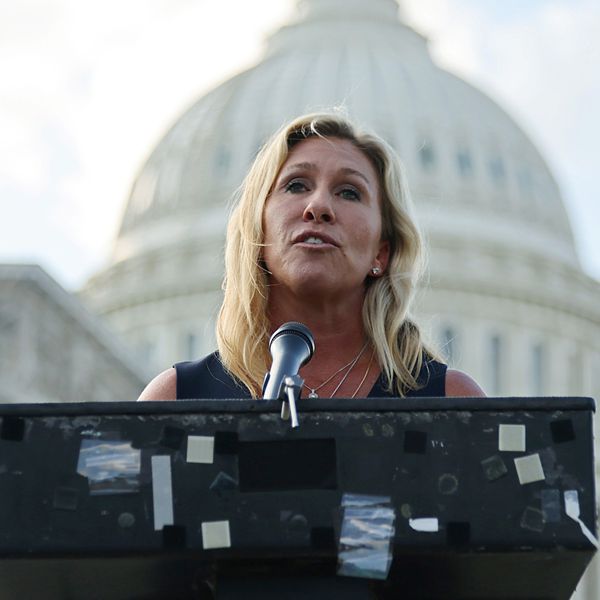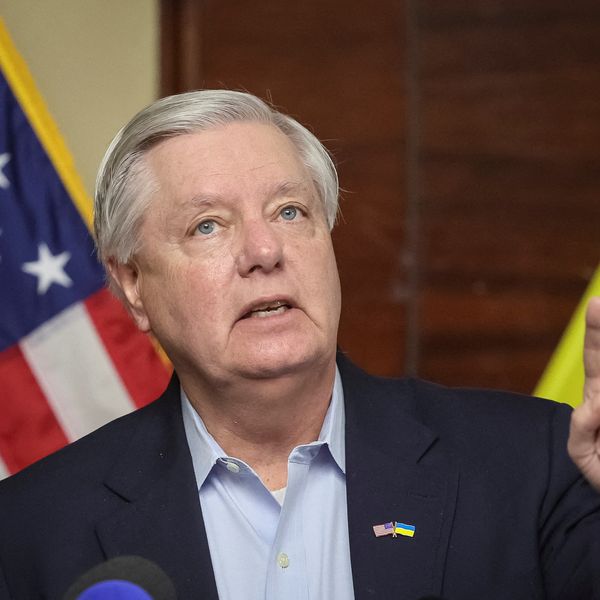The betrayal of Afghanistan was solidified years ago when U.S. leaders made promises they should have, or must have, known they could never keep. The inevitable consequences of creating a hollow government, bloated public sector, and an aid-dependent war economy hung over Afghanistan like a suspended prison sentence.
The recent memory of our botched evacuation is naturally the most salient example of our failure in Afghanistan. Journalist George Packer’s important profile last week in the Atlantic of the final months of the U.S. evacuation in Afghanistan revealed how the value of an Afghan life came down to their proximity to the right American, individual ruthlessness, and blind luck. But the overwhelming scale of human trauma at Kabul’s airport as laid out in The Atlantic might inadvertently lead readers to believe this was an aberration. It wasn’t. Over two decades, the fate of individuals and entire villages hinged on their shifting positions relative to the Taliban’s insurgency and the U.S.-led counterinsurgency.
It is difficult for veterans, diplomats, journalists, aid workers, and many others who dedicated portions of their lives to transform Afghanistan to grapple with a Taliban takeover. It may even be more difficult for Washington as an institution to accept. The complacency leading up to the horrific attacks of 9/11 became Washington’s original sin, and the “War on Terror” was its salvation with the invasion of Afghanistan as its opening salvo. The 9/11 attacks and Afghanistan remained a central part of the legal framework and popular understanding of an increasingly entropic war on terrorism. Perhaps this is why the sheer scale of our failure in Afghanistan is so difficult for some to accept.
The initial invasion freed Afghanistan from the Taliban’s repressive grip and temporarily scattered the terrorists who had found refuge there. But it also produced unsavory partnerships, mass graves, and a rebirth of warlordism and serves as a testament to man’s ingenuity in the pursuit of torture and cruelty — particularly at Guantanamo Bay.
The War on Terror stumbled along in a wayward stupor into Baghdad and, by the time President Obama took office, the Taliban’s insurgency was gaining too much momentum to be ignored. The surge that followed created a web of forward operating bases and combat outposts that protected provincial capitals and Kabul. For some Afghans, this was an era of exponential growth, optimism, and hope for the future. But this progress was underpinned by a violent counterinsurgency that didn’t just create orphans and widows, but also the illusion of coalition control over large swaths of Afghanistan when, in reality, the Taliban often operated freely just several hundred meters away.
It is easy to delude ourselves into believing that violence was the currency of our opponents alone when in reality it was the common denominator. The Taliban were removed by force. The Afghan government was kept in power by force. And the Taliban returned to power by force. Does the world have anything else to offer Afghanistan?
Afghanistan’s winners and losers rotated but the violence grew with each year. Today Washington’s slow strangulation of Afghanistan’s economy is shrugged off as the inevitable consequence of the Taliban’s decision to negotiate in bad faith, take the country back by force, and elevate their most objectionable figures. We deny responsibility for the crisis the Taliban have plunged Afghanistan into or for our own responses to it. Sound familiar? But the disaster unfolding before our eyes is not predestined. It is human-made.
Another common thread of the U.S. intervention in Afghanistan is a discourse that elevated talking points over uncomfortable truths until the latter became so glaringly obvious that to ignore them would be unhinged. It was no secret that Ashraf Ghani was an incompetent leader who surrounded himself with corrupt, sycophantic yes-men and ignored any advice that ran counter to his political aims. Not until the Afghan government collapsed like a house of cards did it become entirely acceptable to be so blunt about the extent of the rot. A voluminous public record of shoddy targeting and U.S. strikes gone awry existed well before last August. But it took a strike on 10 innocent people, including an aid worker and seven children, to finally receive appropriate attention. These are but two examples of a narrative that said one thing publicly and another in hushed tones.
Why then does the evacuation captivate us in particular? For one, that mission is not over. Afghan partners continue to be rescued through the tireless work of volunteers. It absolutely must continue and is intrinsically more valuable than any reflection rooted in cynicism.
But the evacuation is one chapter in a story that should humble us as a country. America sought to transform Afghanistan but in the end it could not even manage its own Special Immigrant Visa program. Burdened by unimaginative bureaucracy, lack of leadership, and the darkest side of domestic politics, America left tens of thousands of Afghan partners to languish. Even minimal creativity and desire could have saved so many of those who supported the United States over two decades. Dozens of major decision points and thousands of smaller ones throughout the U.S. war in Afghanistan could have been decided differently. To remove that agency from ourselves as a nation would be disingenuous. But to dwell on it is also to miss the big picture.
As Packer wrote so eloquently, “something of value–always fragile and dependent on foreigners–had been accomplished.” This was the fait accompli of the U.S. intervention in Afghanistan which built something that could not be sustained without us. Afghanistan was never a priority — and it never could be — because we are not Afghans.















